Published Jack Cochran on August 28, 2017
In the previous blog post I talked about a fast GC run time for residual solvent analysis using vacuum ultraviolet spectroscopy and how samples were brought to quick equilibrium for static headspace work using the Gerstel MPS2. Those samples were in water (H2O), but you can get similar results for DMSO:H2O (Figures 1 and 2). Interestingly, Tetralin, the most involatile solvent typically analyzed seems to establish equilibrium in DMSO:H20 (Figure 3) more quickly than in water alone. Not surprisingly, especially since we’d already published it in a previous blog, overall response of most solvents was better when water was the diluent versus DMSO:H20 (Figure 4). Still, some pharmaceutical articles will not be soluble in water alone, so DMSO can help get them into solution, followed by water addition to help increase detectability for residual solvents during static headspace sampling.
Hopefully you tuned into Lindsey Shear-Laude’s recent webinar on residual solvents analysis using GC-VUV, but if not, watch the blog for how to access an on-demand version of it when it becomes available.
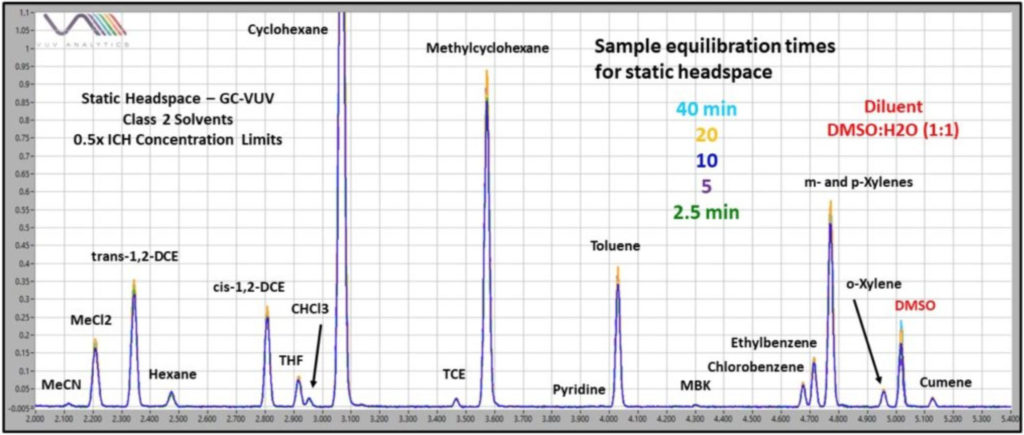
Figure 1. Overlaid residual solvent chromatograms for 40, 20, 10, 5, and 2.5 min static headspace equilibration times at 80°C. The Gerstel MPS2 with shaking and heating established quick equilibration between sample diluent and headspace even when using a retentive solvent like DMSO. 200mg of sore throat spray in 2mL DMSO:water (1:1) was spiked with the residual solvents at 0.5x the ICH concentration limits.
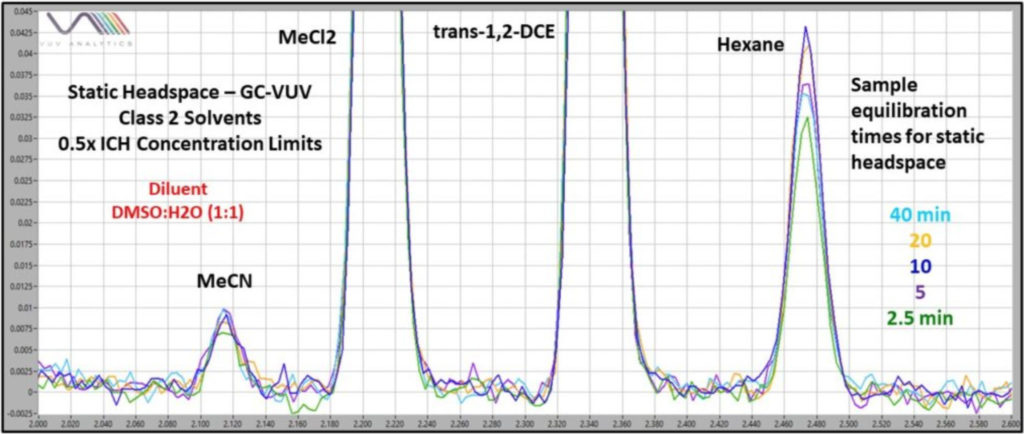
Figure 2. Water-miscible acetonitrile (MeCN) comes to quick equilibration with the Gerstel MPS2 static headspace autosample, as seen in the overlaid chromatograms for 40, 20, 10, 5, and 2.5 min equilibration times at 80°C. The sample was 200 mg of sore throat spray in 2 mL DMSO:water (1:1) with the residual solvents at 0.5x the ICH concentration limits.
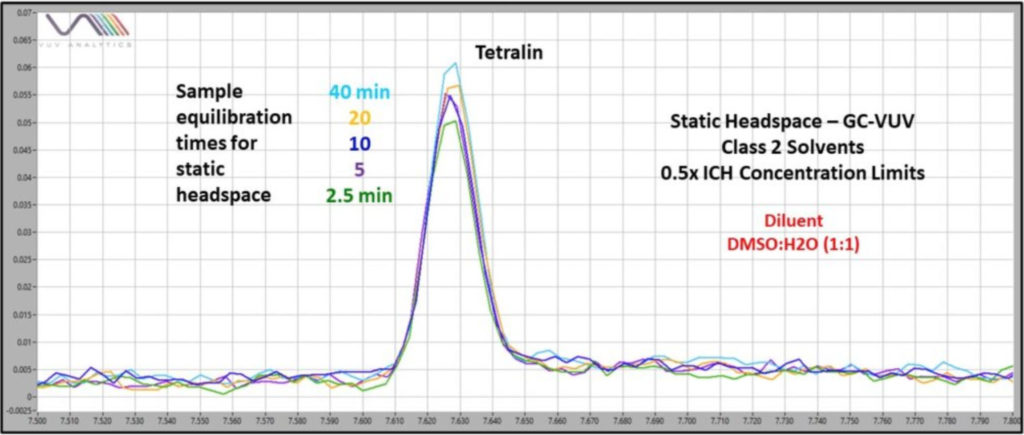
Figure 3. Unlike in the previous work with water as the diluent where Tetralin was still equilibrating at 40 min, equilibration is quickly established for DMSO:H2O (1:1). Tetralin is the least volatile of the Class 2 solvents typically sampled using static headspace.
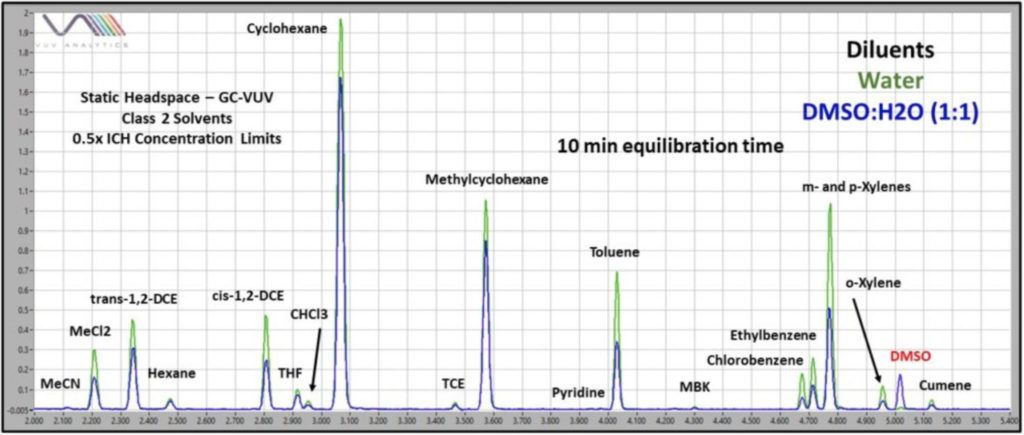
Figure 4. For most Class 2 residual solvents, headspace partitioning is better when using water as the pharmaceutical product diluent. When water-insoluble articles are dissolved in DMSO, an effective way of increasing residual solvent detectability through better headspace partitioning is to dilute the DMSO sample with water 1:1. The sample was 200 mg of sore throat spray.
Other reading on residual solvents analysis using static headspace – GC-VUV.
GC-VUV of Residual Solvents – The Lazy Analytical Chemist
GC-VUV of Residual Solvents – Go with The Flow and Speed Up Your Analyses
GC-VUV of Residual Solvents – No Matrix Effects with the Gerstel MPS2 Static Headspace Autosampler
GC-VUV of Residual Solvents – Non-Target Analysis
GC-VUV of Residual Solvents – Improving Static Headspace Sampling with Water
GC-VUV of Residual Solvents – Matching a Fast Autosampler with a Fast Absorbance Spectrometer


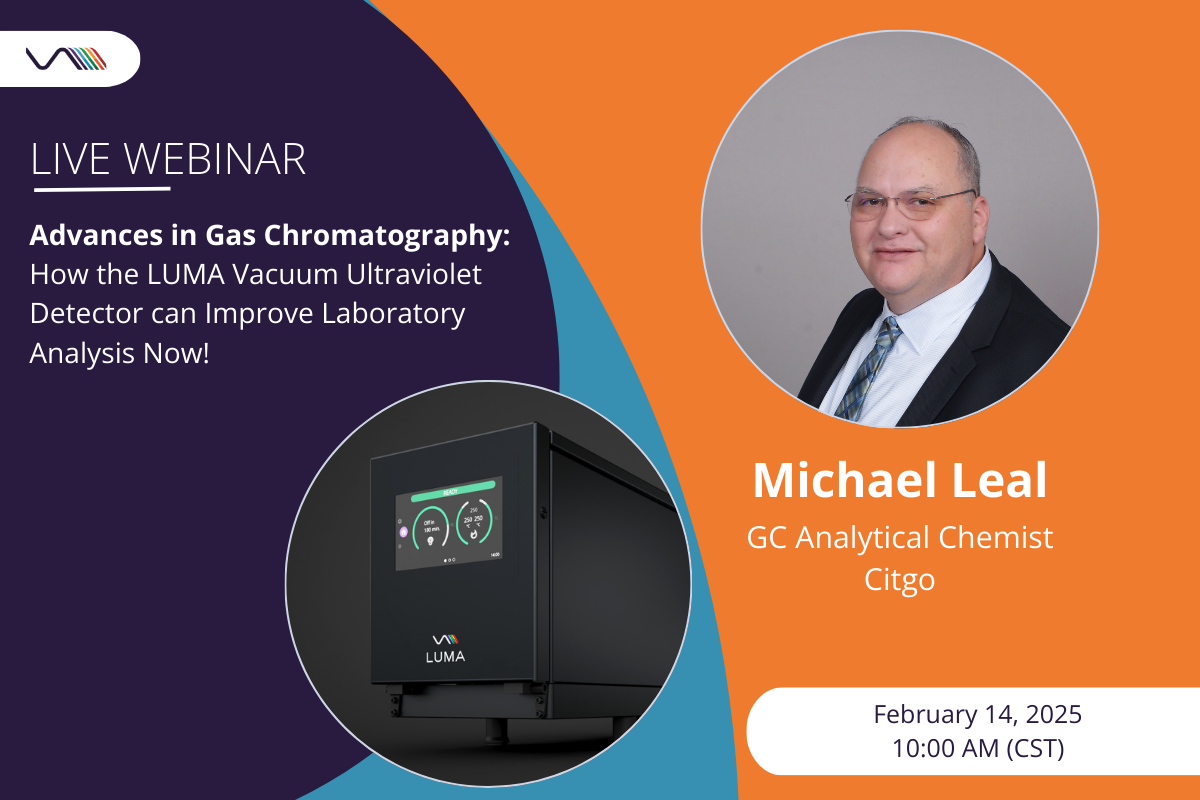
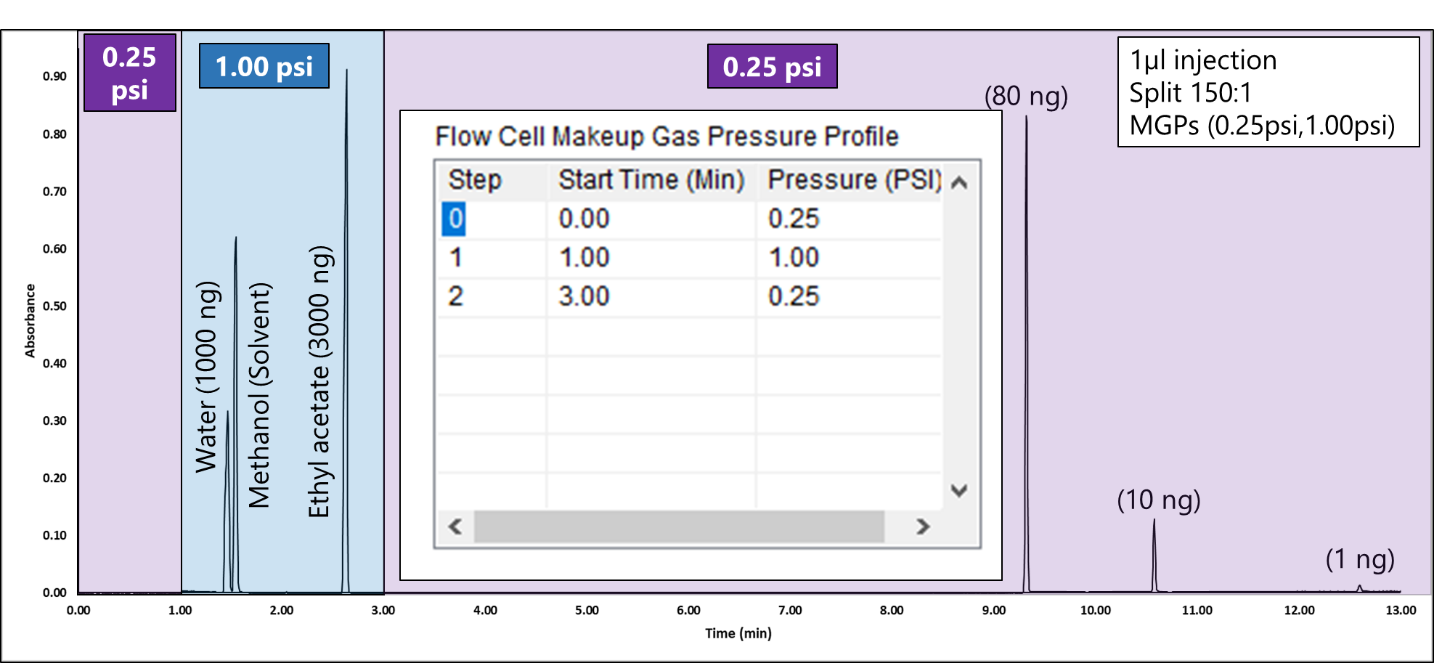
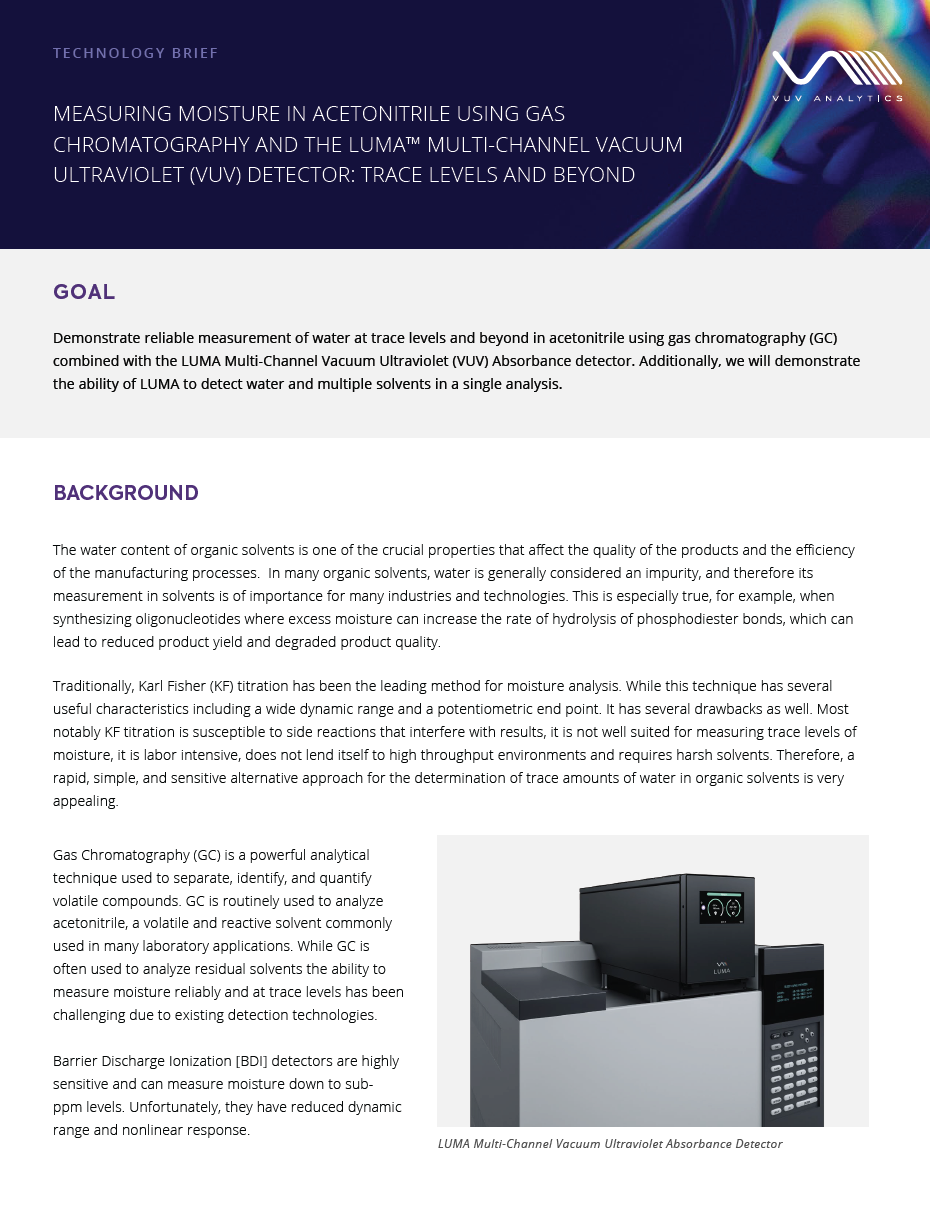





Leave a Reply